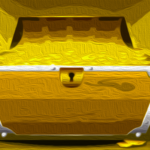Shifts in Illicit Actors' Use of Cryptocurrency
Significant shifts are occurring in the world of illicit actors using cryptocurrency, with Bitcoin no longer being their asset of choice. According to a 2023 report by TRM Labs, the distribution of illicit crypto volume has been greatly impacted by the multi-chain era. Bitcoin's share has plummeted from 97% in 2016 to 19% in 2022. In 2016, two-thirds of crypto hack volume was on Bitcoin, but in 2022, it accounted for less than 3%. Ethereum (68%) and Binance Smart Chain (19%) have dominated the field. Additionally, Bitcoin, which was the exclusive currency for terrorist financing in 2016, has been almost entirely replaced by assets on the TRON blockchain, with a 92% share.
Ramifications of the Shift
This shift challenges the perception that Bitcoin is synonymous with criminal activity. Bitcoin has traditionally been a Schelling Point due to its network effect, market dominance, and liquidity, making it a natural choice in the world of cryptofinance. However, it seems that there is now a separation of equilibria, with bad actors opting for a different point of convergence.
In Game Theory, a Schelling Point refers to a natural solution in situations where multiple parties must make decisions without direct communication. These points rely on shared expectations or common knowledge. Now, the ongoing separation of equilibria indicates a divergence from Bitcoin as the preferred choice for illicit actors.
Policy Takeaways
This shift in illicit finance offers important insights from a policy perspective. Policymakers need to closely study the specific assets and blockchains that are currently favored by criminals and take appropriate action. It is also crucial to replace the generic perspective on digital assets with a more nuanced one, shaping policy narratives on criminal usage.
For example, in the discussion on the use of cryptoassets in terror financing, it is often overlooked that Hamas has stopped accepting Bitcoin donations to protect its sponsors from being exposed. This shift away from Bitcoin in illicit finance is the first documented case of major crime displacement in the world of cryptoassets. It reveals the fluid nature of financial crime as it adapts to the path of least resistance.
Perspectives from Game Theory
A game-theoretic lens, considering the players as product developers, regulators, and both good and bad actors, provides a holistic and nuanced view of the space. In such a setting, independent actions and perspectives generate numerous scenarios as the system is too interconnected for any set of players to control outcomes on their own.
A game-theoretic view of illicit finance emphasizes the need to understand the criminal mind to predict next steps and prepare accordingly. Policy making to combat illegal fund flows has typically been reactive, with bad actors making the first moves. These moves are then studied as emerging risks to craft regulations. However, in the rapidly evolving space of digital assets, this reactive approach is no longer sufficient.
The ongoing wave of crime displacement away from Bitcoin highlights the necessity of equipping policymakers with predictive systems that can forecast future patterns of illicit fund flows. This approach will significantly reduce response time to new threats.
Counter-Crime Initiatives
Lessons from Bitcoin's changing usage can also help counter-crime professionals understand the distinct features of organized crime syndicates. Crime rings that still rely on Bitcoin may indicate a lack of leadership agility. Assessing their position on an agility spectrum can provide further insights into their resourcefulness and technical expertise. This information can assist law enforcement in determining the level of effort required to combat each crime ring. Crime syndicates that have pioneered the shift away from Bitcoin operate with a higher level of ingenuity and continuously adapt to evade detection.
Concluding Thoughts
The shift of financial crime away from Bitcoin highlights the need for a more nuanced approach to curating appropriate and dynamic regulatory and policy frameworks for digital assets and blockchains. It also underscores the dangers of applying broad strokes to the entire spectrum of cryptofinance in policy debates on criminal usage.
This article was written by Debanjan Chatterjee. The opinions expressed are entirely their own and do not necessarily reflect those of BTC Inc or Bitcoin Magazine.
Frequently Asked Questions
Does a gold IRA make money?
Yes, it is possible. But not as many as you might think. It all depends on your willingness to take on risk. If you can afford to invest $10,000 every year for 20-years, you could possibly have $1,000,000 by retirement age. You'll end up losing everything if you place all your eggs in the same basket.
Diversifying your investments is important. Inflation can make gold perform well. You should invest in an asset that increases with inflation. Stocks are able to do this because they rise as companies make more profit. This is also true for bonds. They pay interest every year. They are great during economic growth.
But what happens if there's no inflation? During deflationary periods, bonds fall in value while stocks fall further. This is why investors should not invest all of their savings in one investment, such a bond mutual fund or stock mutual fund.
They should instead invest in a combination of different types of funds. They could also invest in bonds and stocks. Or, they could invest in both bonds and cash.
This gives them exposure to both sides. Inflation or deflation? They will see a return over time.
How can I withdraw from an IRA with Precious Metals?
If you have a precious metal IRA account such as Goldco International Inc., it may be worth considering withdrawing your funds. This will ensure that your metals are worth more than if they were in an account with a precious metal IRA company like Goldco International Inc.
Here are the steps to help you withdraw money from your precious-metal IRA.
First, check to see if your precious metal IRA provider permits withdrawals. This option is available from some companies, but not all.
The second step is to determine if selling your metals will allow you tax-deferred gain. Most IRA providers offer this benefit. Some IRA providers offer this benefit, but others don't.
Third, make sure to check with your precious metal IRA provider if there are any fees associated with these steps. You may have to pay an additional fee for the withdrawal.
Fourth, make sure you keep track for at least three consecutive years of the precious metal IRA investments after you have sold them. In other words, wait until January 1st each year to calculate capital gains on your investment portfolio. Fill out Form 8949 and follow the instructions to calculate how much gain you've realized.
You must file Form 8949 and also report any sale of precious metals to IRS. This will ensure you pay taxes on all the profits that your sales generate.
Before selling precious metals, it is a good idea to consult an attorney or trusted accountant. They will ensure you are following all the procedures and avoid making costly mistakes.
What precious metals are allowed in IRA?
The most common precious metallic used in IRA accounts, is gold. Investments in gold bullion coins or bars can be made as well.
Precious metals, which don't lose any value over time, are considered safe investments. They're also considered a great way to diversify an investment portfolio.
Precious metals include palladium and platinum. These metals share similar properties. Each metal has its own use.
In jewelry making, for instance, platinum is used. The catalysts are made from palladium. The production of coins is done with silver.
Consider how much you plan to spend on gold when deciding on which precious metal to buy. It may be more cost-effective to purchase gold at lower prices per ounce.
You also need to think about whether your investment is private. If so, then you should go with palladium.
Palladium is more expensive than gold. However, it is also rarer. This means you might have to spend more.
When choosing between gold or silver, another important aspect is the storage fees. Gold is stored by weight. You will pay more if you store larger amounts.
Silver is stored by volume. You'll be charged less for smaller amounts.
You should follow all IRS rules if you plan to store precious metals in an IRA. This includes keeping track of transactions and reporting them to the IRS.
How does a gold IRA generate interest?
It depends on how much money you put into it if you have $100,000, then yes. You can't if you have less than $100,000
The amount of money that you put into an IRA is what determines whether it earns or not interest.
If you have more than $100,000 in retirement savings each year, you might consider opening a regular brokerage accounts.
While you may earn more interest there than elsewhere, you are also exposed to more risky investments. If the stock market crashes, you don't want all your money to be lost.
An IRA is better if you have $100,000 to invest per year. At least until the market starts growing again.
Statistics
- Depending on your financial situation, most experts recommend you invest no more than 5% to 10% of your retirement funds in precious metals. (forbes.com)
- To qualify as IRA allowable precious metals and be accepted by STRATA, the following minimum fineness requirements must be met: Gold must be 99.5% pure, silver must be 99.9% pure, and platinum and palladium must both be 99.95% pure. (stratatrust.com)
- Silver must be 99.9% pure • (forbes.com)
- The maximum yearly contribution to an individual's IRAs is currently $6,000 ($7,000 for those 50 years or older), or 100% of earned income, whichever is less. (monex.com)
External Links
forbes.com
- Gold IRA, Add Some Sparkle to Your Retirement Nest egg
- Understanding China's Evergrande Crisis – Forbes Advisor
wsj.com
regalassets.com
takemetothesite.com
How To
The Best Precious Metals Ira 2022: Things to Remember
Precious Metals Ira has become a popular choice for investors. This article will show you how to invest in precious metals and what makes it so appealing.
The key attraction of these assets lies in their long-term growth potential. If we look at historical data, gold prices show incredible returns. Gold prices have increased by almost $1900 per troy ounce in the past 200 year, from $20 an ounce to nearly $1900 over that time. The S&P 500 Index was only up by 50%.
During times of economic uncertainty, people consider gold a safety net. Stock market downturns cause people to sell their stocks and seek safety in gold. Also, gold is considered a hedge against inflation. Many economists believe there will always be inflation. They believe that physical gold can be used to protect your savings against future price rises.
You should be careful before you purchase precious metals such as palladium, gold, platinum or silver. You must first decide whether you wish to invest in bullion coins or bars. Bullion bars are typically purchased in large quantities, like 100 ounces, and kept away until they are needed. You can also buy bullion bars in smaller quantities with coins.
Second, consider where you want to store your precious materials. Some countries are more safe than others. If you are in the US, it might be a good idea to store your precious metals abroad. If you are thinking of storing your precious metals in Switzerland, however, you might be wondering why.
Finally, you should decide whether you want to invest directly in precious metals or through “precious metals exchange-traded funds” (ETFs). ETFs, which track the performance different commodities like gold, are financial instruments. You can use these to get exposure to precious metals without having to own them.
—————————————————————————————————————————————————————————————-
Based on [POSTTITLE]
by [POSTAUTHOR]


















